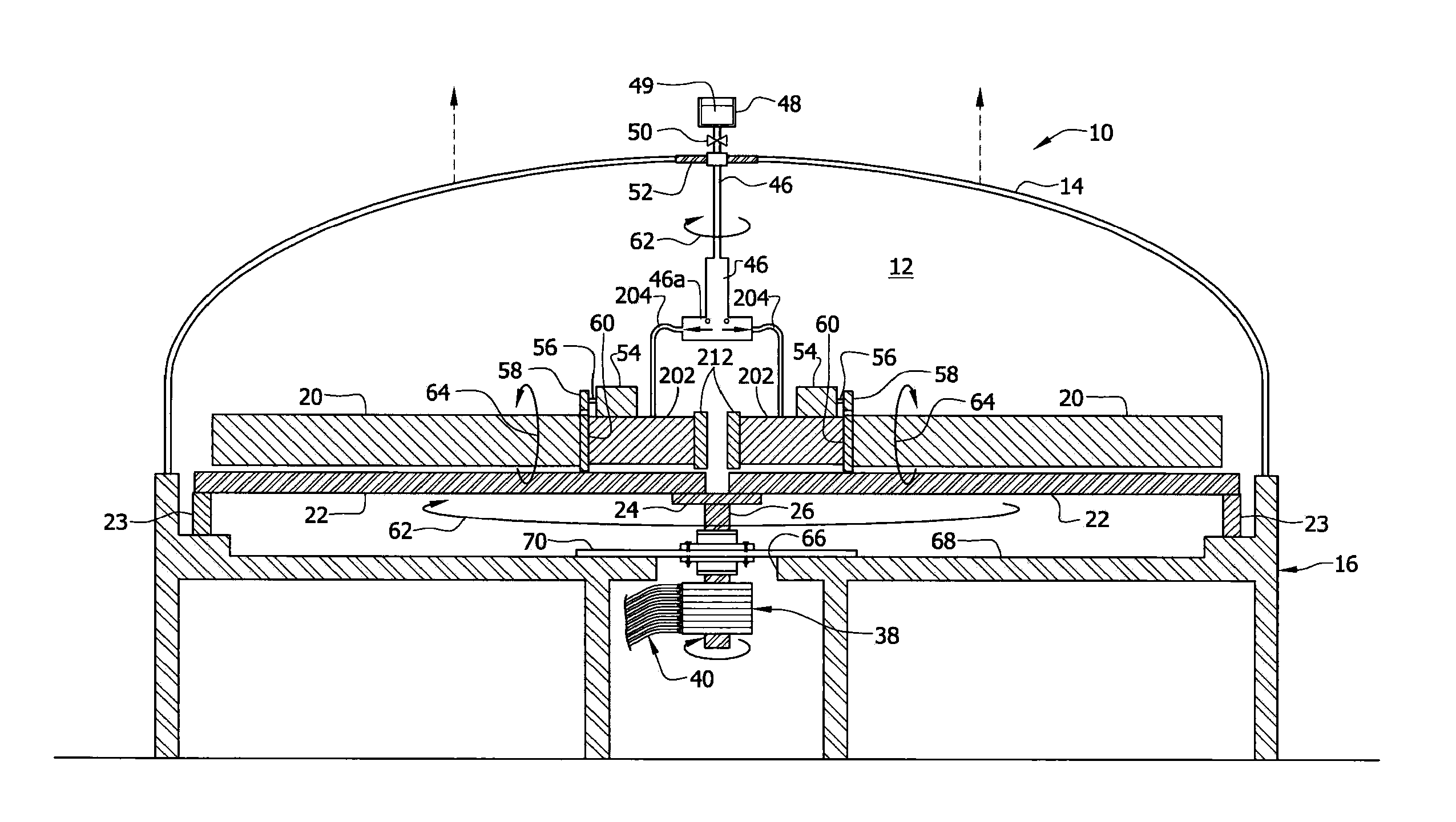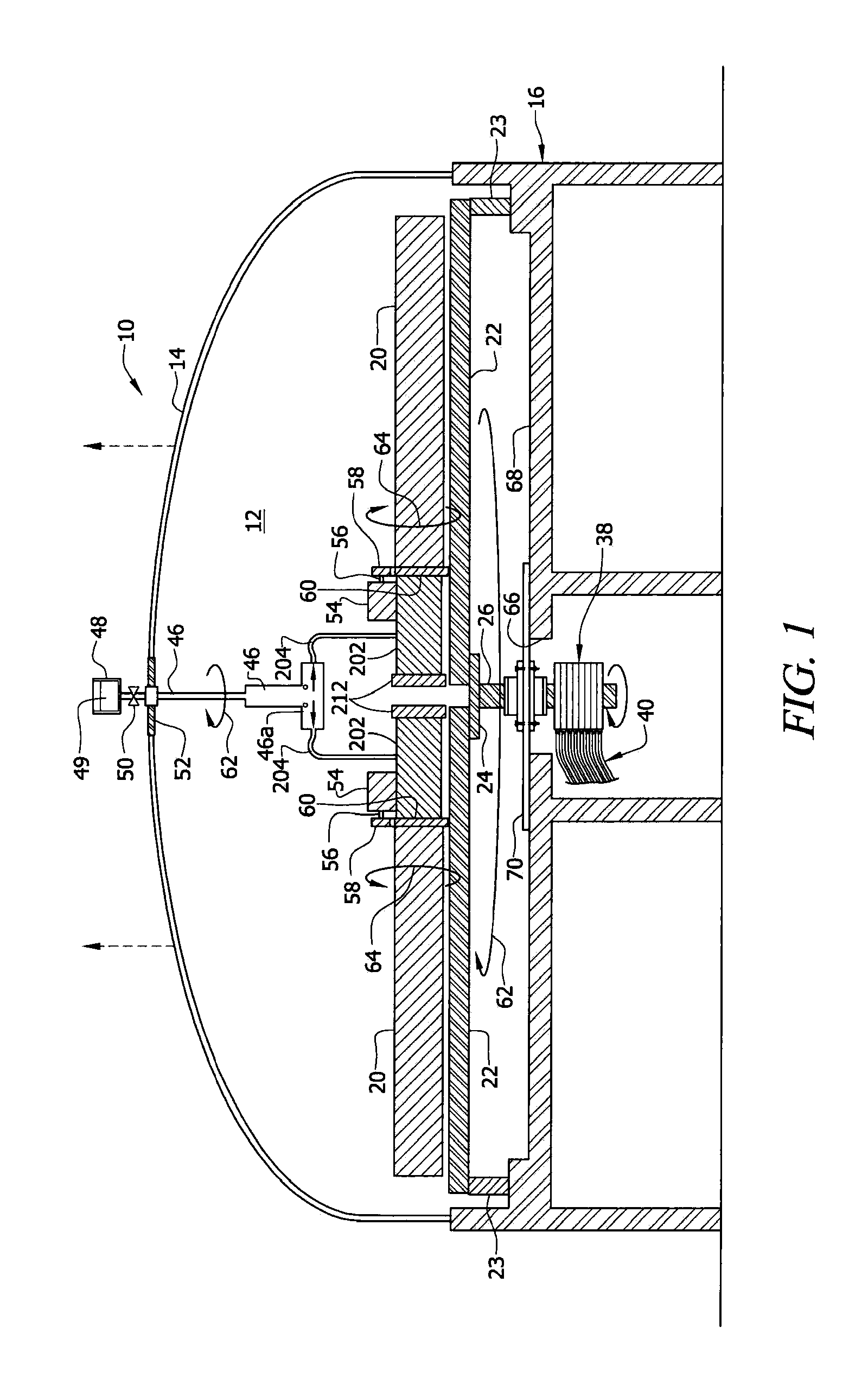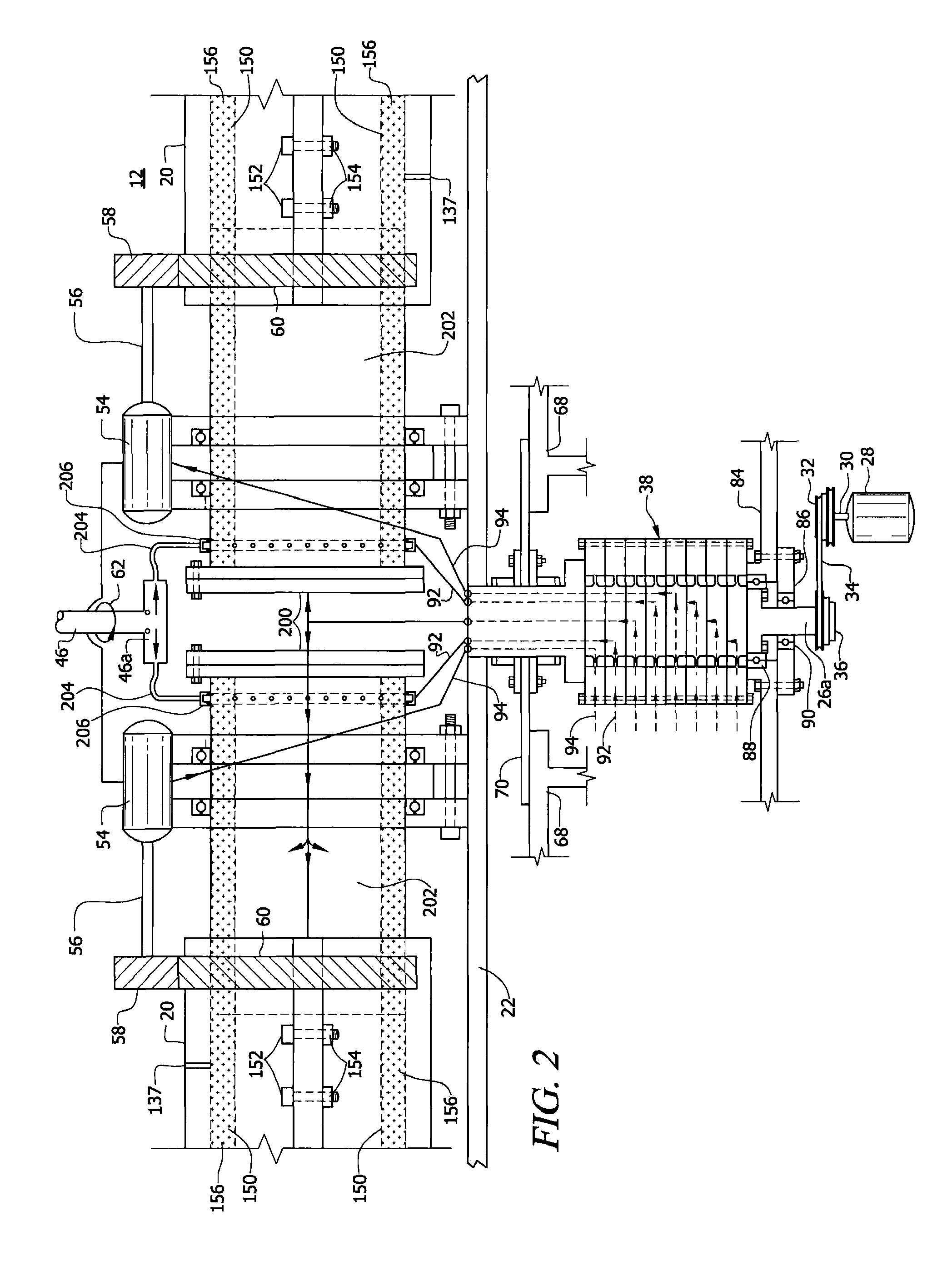Low pressure vacuum resin infusion system
- Summary
- Abstract
- Description
- Claims
- Application Information
AI Technical Summary
Benefits of technology
Problems solved by technology
Method used
Image
Examples
first embodiment
[0071]Although it is advantageous to position each part mold 20 within a vacuum, it is not necessary to enclose the entire apparatus in a monolithic vacuum chamber or atmospheric cofferdam 12 as in the
second embodiment
[0072]In FIG. 3A, large vacuum chamber 12 is eliminated. Instead, each part mold 20 having micro perforations 137 formed therein is individually enclosed within a vacuum housing or atmospheric cofferdam 110 dedicated to it. Far less energy is needed to create a vacuum in such smaller housings 110 vis a vis the larger vacuum chamber 12. Moreover, the smaller housings 110 are safer to use than the larger housing 12 because a worker might be in the larger housing when another unaware worker closes the vacuum chamber and begins operating the apparatus. Only two housings 110 are depicted in FIG. 3A to simplify the drawing but it should be understood that more of such housings may be symmetrically arranged on the supporting surface.
[0073]FIG. 3B depicts a third embodiment like that of the second embodiment but where support table 22 is oriented in a vertical plane for rotation about a horizontal axis.
fourth embodiment
[0074]A fourth embodiment including a vacuum chamber or atmospheric cofferdam 120 for making hollow spherical objects is depicted in FIGS. 4-13. This structure is easily adaptable to making hollow non-spherical seamless objects such as aircraft fuselages, natural gas tanks, bus bodies, high pressure tanks, car bodies, wind generator blades, and the like as well.
[0075]Atmospheric cofferdam 120 includes a box-like main body 122 having lid or closure means 124. In this particular embodiment, an elongate convexity 126 is formed in lid 124 to accommodate a spherical object. The convexity reduces the amount of air that must be pumped from atmospheric cofferdam 120 relative to the amount of air that would need to be removed if main body 122 were deep enough to accommodate a spherical object without said convexity formed in lid 124.
[0076]Vacuum pump 128 is in fluid communication with the interior of vacuum chamber 120 through conduit 129. Motor 130 has power take off shaft 131 that extends ...
PUM
| Property | Measurement | Unit |
|---|---|---|
| Length | aaaaa | aaaaa |
| Pressure | aaaaa | aaaaa |
| Centrifugal force | aaaaa | aaaaa |
Abstract
Description
Claims
Application Information
 Login to View More
Login to View More - R&D
- Intellectual Property
- Life Sciences
- Materials
- Tech Scout
- Unparalleled Data Quality
- Higher Quality Content
- 60% Fewer Hallucinations
Browse by: Latest US Patents, China's latest patents, Technical Efficacy Thesaurus, Application Domain, Technology Topic, Popular Technical Reports.
© 2025 PatSnap. All rights reserved.Legal|Privacy policy|Modern Slavery Act Transparency Statement|Sitemap|About US| Contact US: help@patsnap.com



